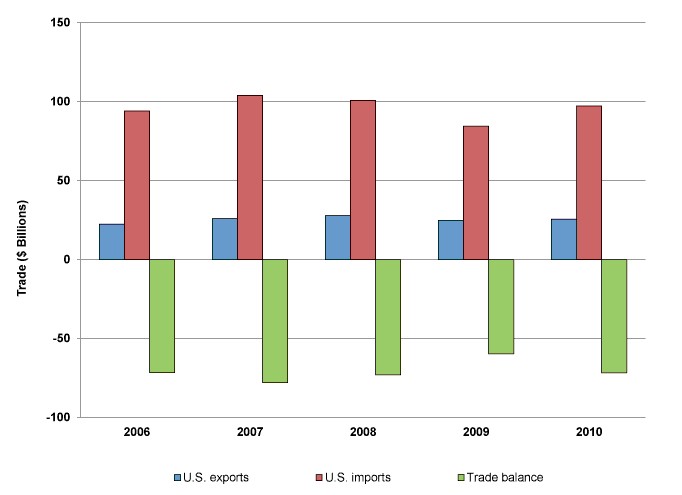View Section in Publication :: Return to Overview

Key Economic Trends
- The U.S. trade deficit in miscellaneous manufactures increased by $12.1 billion (20 percent) to $71.8 billion in 2010, as imports rebounded faster than exports from the 2008-09 recession. The trade deficit with China rose by $7.8 billion (16 percent) to $57.3 billion and was the main driver of the expanded trade deficit.
- U.S. exports of miscellaneous manufactures rose by $.8 billion (3 percent) to $25.5 billion in 2010. Most of this increase was attributable to a $0.6 billion increase in U.S. exports of arms, ammunition, and armored vehicles.
- The nascent recovery from the 2008-09 recession led to a $12.9 billion (15 percent) increase in U.S. imports of miscellaneous manufactures in 2010, with China accounting for 59 percent of total sector imports. The increase in U.S. imports of furniture, lamps, luggage, and toys reflected a resumption of consumer spending deferred during the recession.
- Despite low turnover in the housing market, which generally drives consumption of furniture and lamps, U.S. furniture imports rose by $3.9 billion (20 percent) in 2010 to $24.0 billion. China continues to be the dominant supplier to the U.S. market, with imports from China growing by $2.5 billion (22 percent) in 2010.
Trade Shifts from 2009 to 2010
- U.S. trade deficit: Increased by $12.1 billion (20 percent) to $71.8 billion
- U.S. exports: Increased by $0.8 billion (3 percent) to $25.5 billion
- U.S. imports: Increased by $12.9 billion (15 percent) to $97.3 billion
